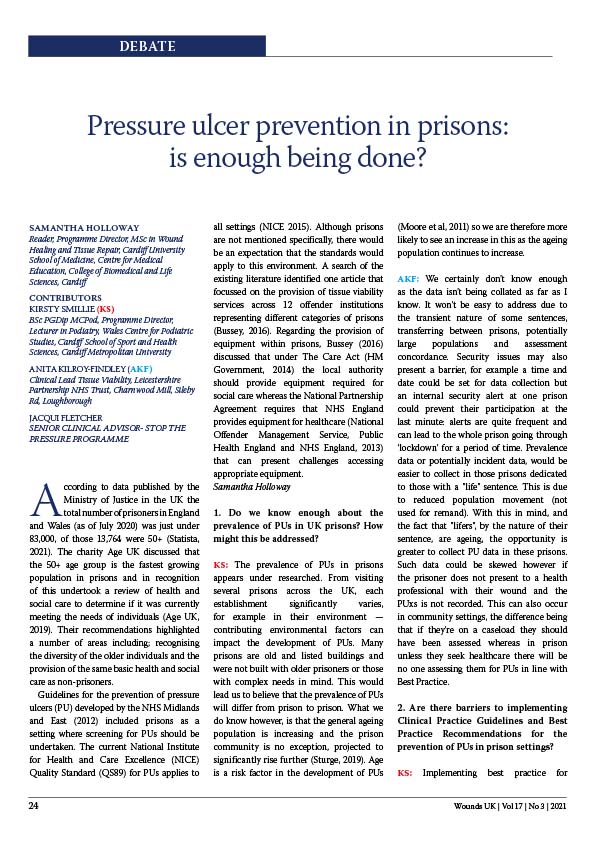According to data published by the Ministry of Justice in the UK the total number of prisoners in England and Wales (as of July 2020) was just under 83,000, of those 13,764 were 50+ (Statista, 2021). The charity Age UK discussed that the 50+ age group is the fastest growing population in prisons and in recognition of this undertook a review of health and social care to determine if it was currently meeting the needs of individuals (Age UK, 2019). Their recommendations highlighted a number of areas including; recognising the diversity of the older individuals and the provision of the same basic health and social care as non-prisoners.
Guidelines for the prevention of pressure ulcers (PU) developed by the NHS Midlands and East (2012) included prisons as a setting where screening for PUs should be undertaken. The current National Institute for Health and Care Excellence (NICE) Quality Standard (QS89) for PUs applies to all settings (NICE 2015). Although prisons are not mentioned specifically, there would be an expectation that the standards would apply to this environment. A search of the existing literature identified one article that focussed on the provision of tissue viability services across 12 offender institutions representing different categories of prisons (Bussey, 2016). Regarding the provision of equipment within prisons, Bussey (2016) discussed that under The Care Act (HM Government, 2014) the local authority should provide equipment required for social care whereas the National Partnership Agreement requires that NHS England provides equipment for healthcare (National Offender Management Service, Public Health England and NHS England, 2013) that can present challenges accessing appropriate equipment.







